Defensive Pistol Barrel Length & Ammo Selection
- Graham Baates
- Aug 29, 2022
- 5 min read
Updated: Mar 8, 2024
*Some of the external links found on this website are affiliate links. Those links use cookies to generate revenue and fund continuation of this website. By clicking an external link you are consenting to a temporary cookie, by purchasing from that link you are supporting this website. To opt out of cookies do not click external links.
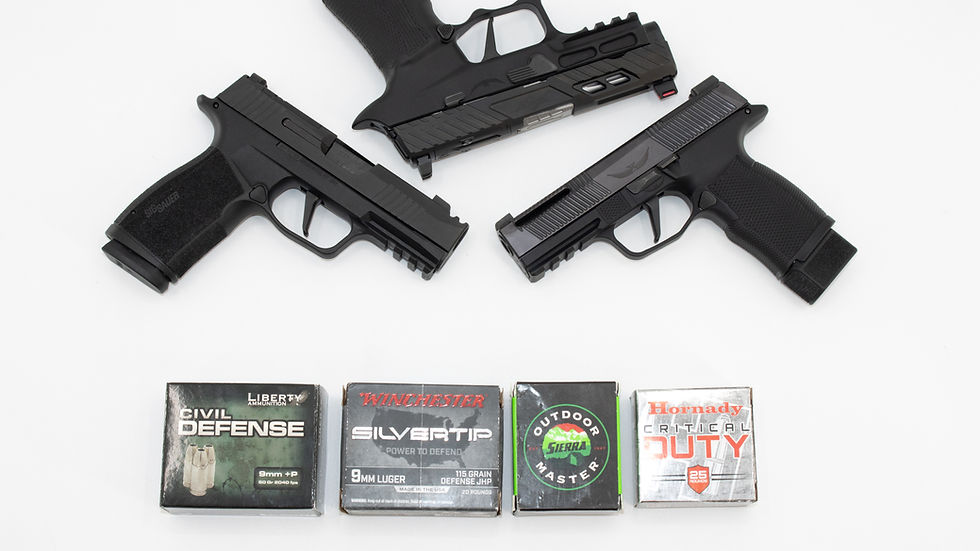
Our recent review of the Sig P365 X-Macro Comp suddenly raised questions of if a 3.1" barrel is enough. The question arises because, aside from specialty "micro" loads, 9mm ammunition is generally loaded to perform properly from a 4" barrel as per SAAMI (Sporting Arms and Ammunition Manufacturer's Institute) specifications. For defensive ammunition that means the hollow point is engineered to open properly when it hits the target within a certain velocity range.
If a hollow point hits at too high of a speed it risks ripping itself apart. Too low of a speed (such as from a shorter barrel) and there won't be enough force to properly open the hollow point. The intent of a hollow point of course is to open upon impact, slowing the projectile down by increasing surface area (greater damage) and expending energy IN the target rather than passing through the target. It's a win-win for the user. Deliver energy to the target, cause more damage than the original diameter of the bullet would otherwise do, and minimize the risk of harming an innocent bystander behind the target. All of that requires speed.
Each projectile has a window, or range, of speed within which it will perform as intended. Recently some projectile developers have made great advancements in projectile design to help hollow points open properly at lower speeds. These are being used in loads labeled "micro" or "sub-compact" etc. The irony of so much sudden interest in this science is that the Sig P365 3.1" 9mm barrel is nothing new. Less than ten years ago when single-stack 9mm pistols were popular (S&W Shield, Walther PPS, etc.) most of those pistols only have a 3" barrel.
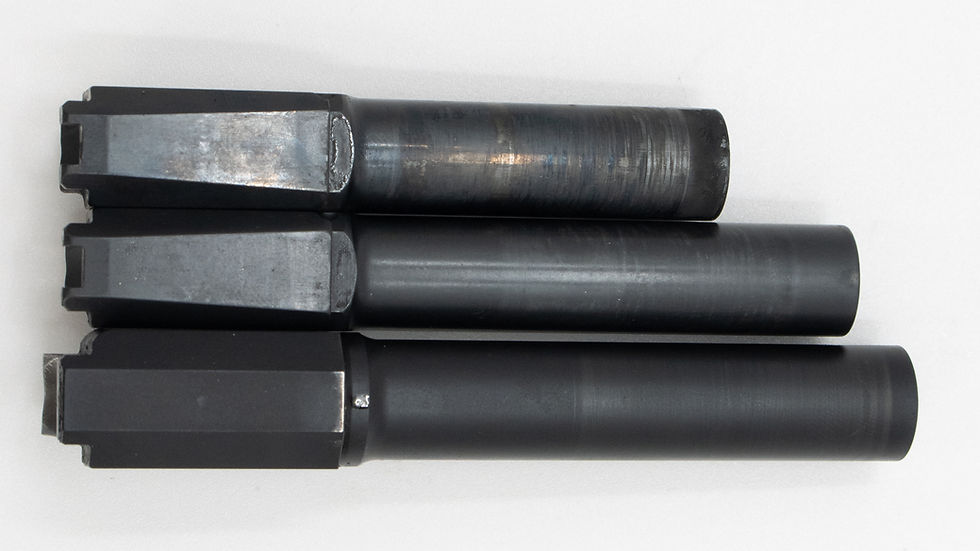
So What's The Stink About? The Sig P365XL has a 3.7" barrel, the standard P365 a 3.1" barrel. The new P365 X-Macro Comp uses the slide length of the P365 XL but shorter barrel of the P365 in order to use the slide as an integrated compensator. The question then arose that if we're going to have the longer slide (bigger gun) of a P365XL, but only the barrel of a P365 what are we giving up? Generally those who accept a shorter barrel are doing so to have a smaller, lighter, easier-to-carry pistol, but at the expense of lost sight radius, projectile velocity, and less energy on target.
Is the Difference That Big? That's the question we wanted to answer. Of course we aren't the first to wonder, nor the first to test, but our test should help shed some light. We gathered up A Sig P365 XL, Sig P365 X-Macro Comp, and our fancy P320 X-Carry Build with a 3.9" barrel to use as a control. Our control gun has an aftermarket barrel as it was built from parts, but the P365 XL and P365 X-Macro Comp are factory barrels. We then selected four different defensive loads of different projectile weights. Defensive ammunition is where muzzle energy is truly important. Different companies and projectile weights because one load may prove more sensitive than another to barrel-length.
Footage of our test can be seen in the video below:
Ammunition Selected: The loads ranged in projectile weight from 50gr to 135gr, and with advertised velocities from unlisted to 2040fps! Since we do not know what the intended velocity for ideal performance is, we must assume that the advertised velocity is the intended velocity. Throughout this test velocity and projectile weight were used to calculate energy. We focus on energy because delivering energy is the whole point of firing a shot.
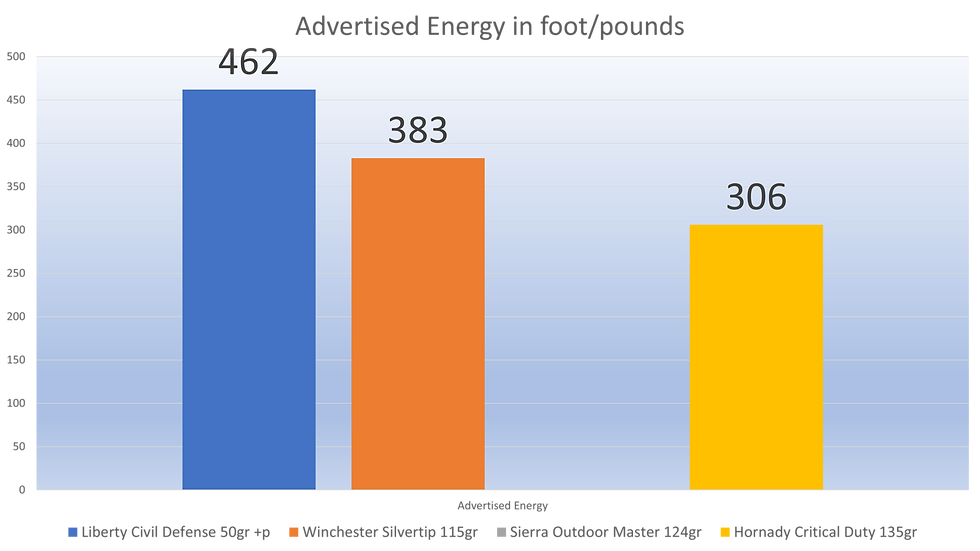
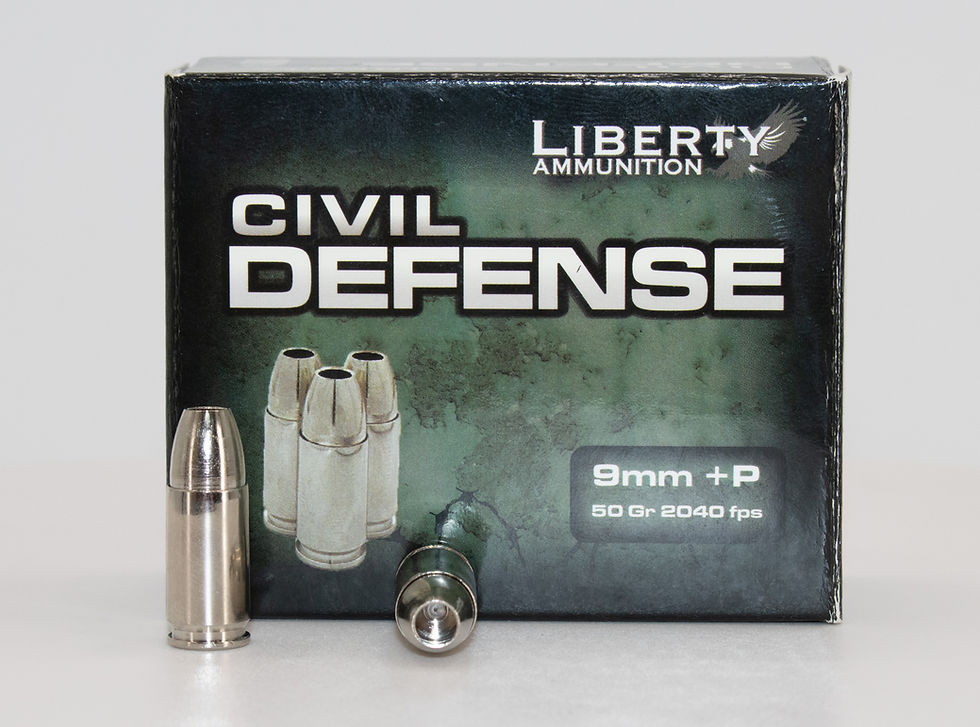
Liberty Civil Defense 50gr +p has an advertised velocity of 2,040 feet per second. The projectile is intended to fragment into a starburst pattern as we have seen it do in ballistics gel. The "+p" overpressure combined with a lightweight projectile is how this round develops such incredible speed. Energy is a factor of velocity and projectile weight, the Civil Defense round is certainly leaning heavily on speed to do it's job. For more information about what "+p" means and its application see our article HERE. Results from our test are below.

The P365 X-Macro Comp generated 98% of the advertised energy. We may not know the exact performance parameters for the projectile, but 98% sounds good to me.
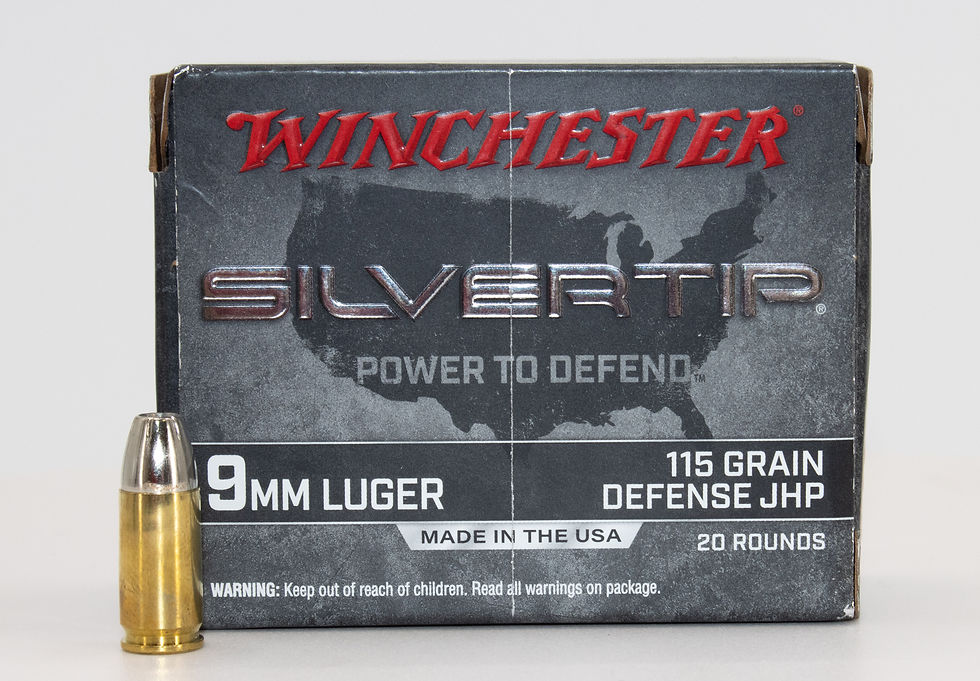
Winchester Silvertip 115gr is a load that both in weight and velocity is more akin to standard range ammunition. It's a relatively-affordable hollow point with no special claims other than a "time-proven design". On one hand "time-proven" doesn't promise modern design, but "proven" is something we don't get to hear much about when it comes to defensive handgun ammunition use.
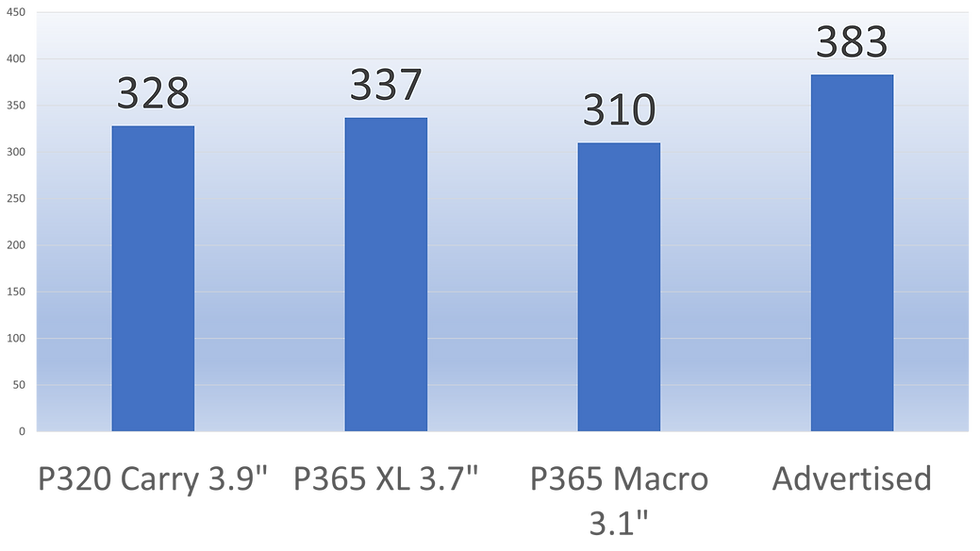
The closest we got to the advertised energy was 88% with the P365 X-Macro Comp producing just 81%. It appears this load was intended for longer barrels.
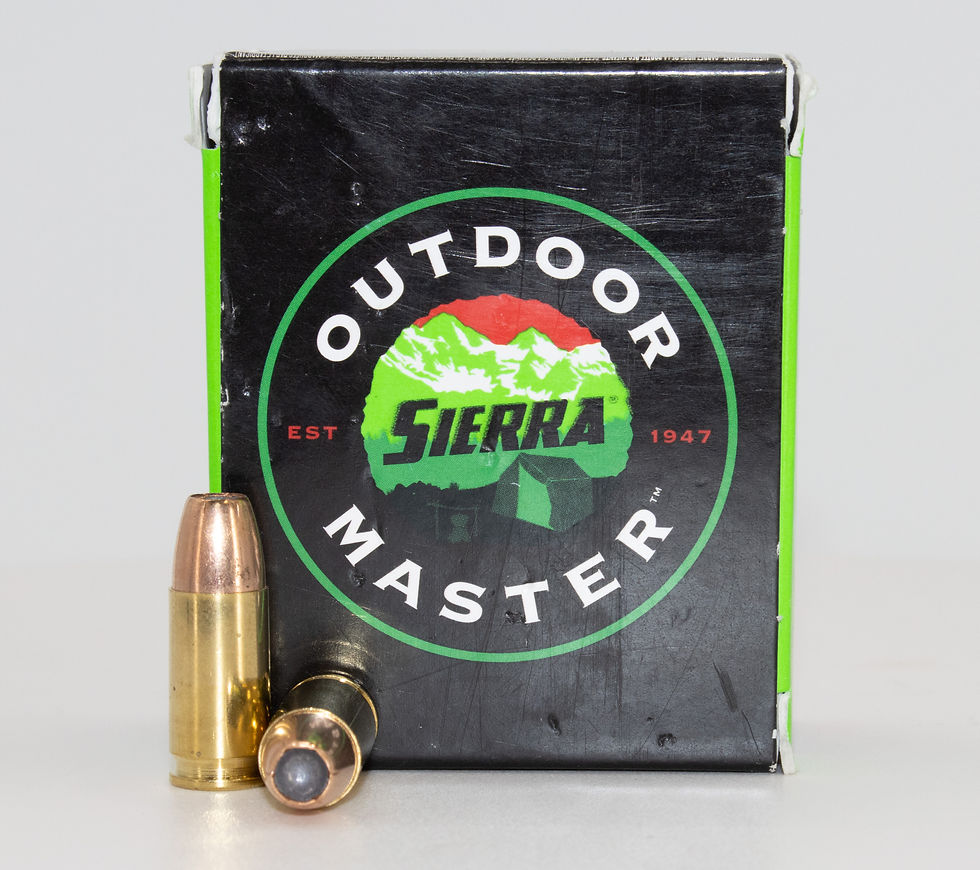
Sierra Outdoor Master 124gr has no advertised velocity to base our results on. No performance promises are on the box or even on the company website other than "uniform expansion". We selected this load as it is both common and affordable
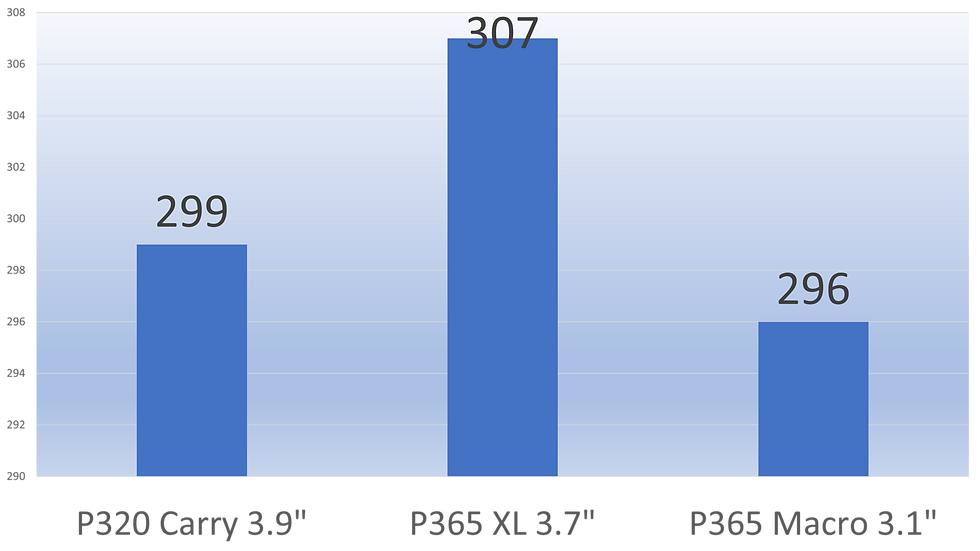
The wonder of auto-scaling charts make the P365 X-Macro Comp appear to have significantly less energy, but mathematically it's only a 4% difference. Can it be trusted? We don't know since we don't know what the intended energy was.
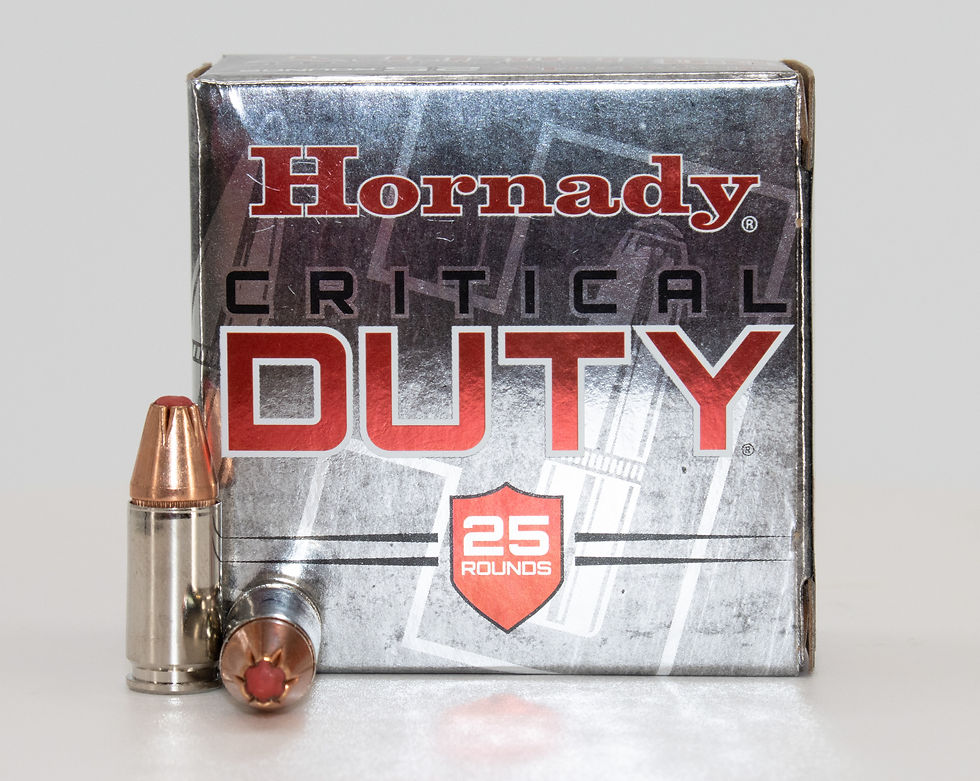
Hornady Critical Duty 135gr is a famous load, known for its touted barrier penetration abilities. This is the non +p version, but advertising retains the same performance as the round intended for duty use.
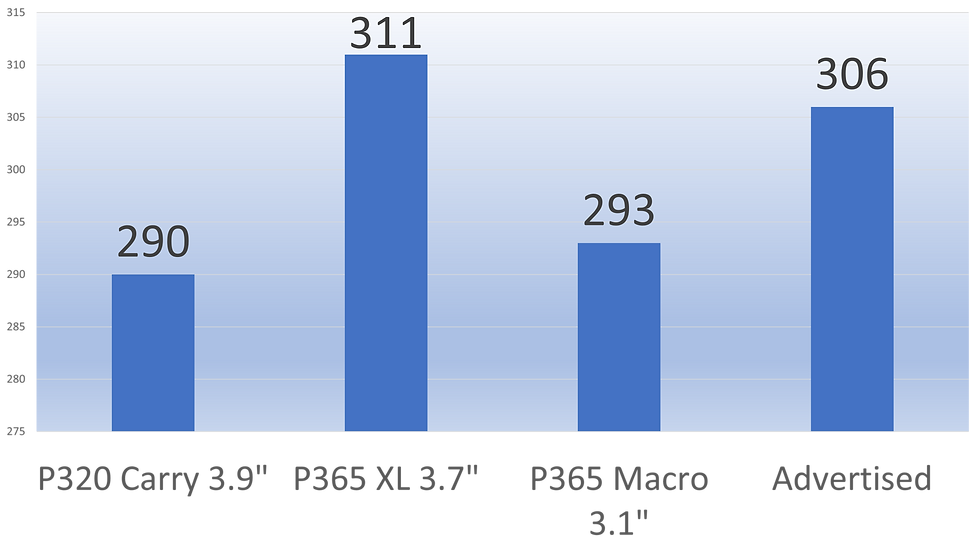
The P365 XL managed again to best the intended energy. The shorter P365 X-Macro Comp yielded 96% of the intended energy. This to me seems close enough.
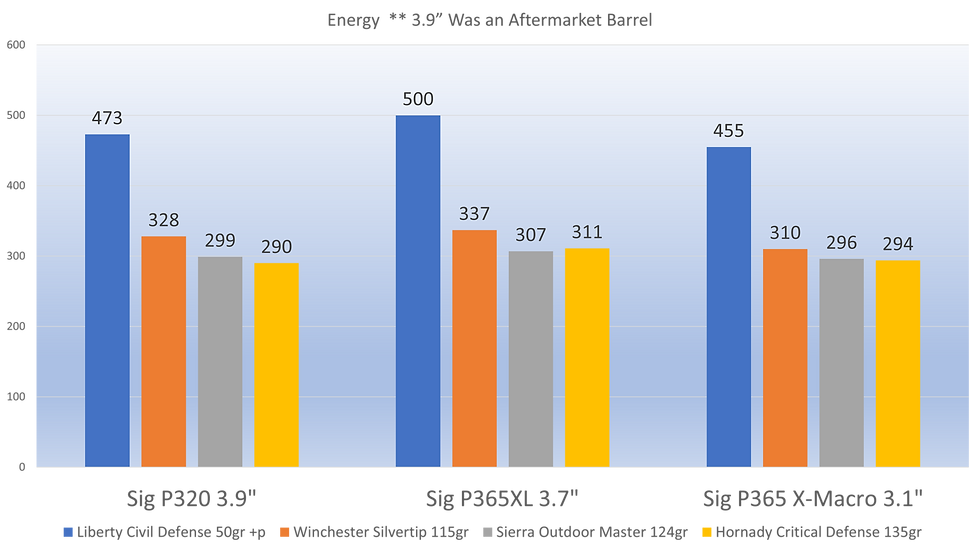
Conclusion: Is a 3.1" barrel enough? That depends on your ammunition selection. We also noted that our 3.9" barrel did not perform as expected (should have had the highest energy of the three guns tested). The manufacturer has been contacted and will investigate.
The Liberty Civil Defense load certain out-performed the others in energy, proving once again that speed is important. If you don't have barrel length to create it selecting a higher-pressure, lighter-projectile is the way to go.




Graham,
Great post! From a tech nerd just the information needed and mostly answered a question I posted previously.
Very good article and information... And just stresses the point that there aren't always hard and fast rules that just always make a difference. Testing and research is key.
A somewhat related question, why does it seem that barrel length on pistols, at least semi-auto ones, include the chamber and not just the actual rifled section?
For example, SIG P320C has a barrel length of 3.9", the 9mm case is 0.75" long.. If you factor in that the loaded bullet will be further into the chamber than just the case length, the overall length of a round I have on hand is 1.1". So when this round is chambered, the 3.9" barrel is now effectively 1.1" shorter, so the lengt…
I'm no engineer, but it could be a looser chamber (enhances reliability, but results in less pressure), a tighter bore consuming more energy to push the bullet through (but potentially more accurate) or a looser bore (not good). I've seen this before with other aftermarket barrels from other companies. A truer test would have been to run a Sig barrel but we didn't have one in 3.9".
This is interesting. Thanks for doing this testing, GB.
It'll be kinda fascinating to see how this pans out. Seems likely that it could be that there is some sort of problem with the 4" barrel used for this test (i.e. manufacturing defect). But I wonder if, given how popular the micro 9s have become, ammo manufacturers might not be watering down their ammo such that it shoots best out of barrels shorter than the 4" standard?
Very useful. The results were surprising. On a different note, do you know that the cosaint arms cos21 & cos11s have a fast action safety system? With safety off hammer back, you can push the hammer down, without pulling the trigger. The safety clicks on. When you flip the safety off, the hammer goes back into the cocked position. Similar to the regulus double action plus, kinda.